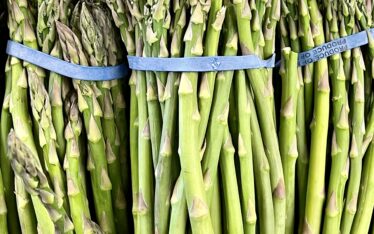 Red leaves, the harbinger of fall, are already visible on some of the trees here in New England this Labor Day weekend. A camping trip with my brother’s family is our final adventure of summer ’08, which has been a very special one for our family.
Red leaves, the harbinger of fall, are already visible on some of the trees here in New England this Labor Day weekend. A camping trip with my brother’s family is our final adventure of summer ’08, which has been a very special one for our family.
The highlight was our journey to Israel, which our Rabbi dubbed a pilgrimage (see photos at right). He promised us that visiting Israel would be like “coming home.” I was anxious to explore my spiritual connection to the land and wondered if I could really feel at home there.
My doubt dissolved at the first stop following our arrival in Tel Aviv. Standing atop Mount Scopus, overlooking Jerusalem at sunset, I felt at once deeply peaceful. The base of Masada felt like the surface of the moon at 4:45 am as we began our hike up the mountain before dawn. My daughter’s religious school teacher, an Israeli native, says that seeing the sunrise from Masada is like witnessing creation. Watching the sun appear, seemingly from inside the Dead Sea, the lowest point on the earth, I understood this perfectly. The image is engraved in my memory along with the look in my children’s eyes as they watched and listened to our young guide explain what Masada meant to him.
 On another note, this trip was our first “group” vacation. We traveled with about nine other families, our Rabbi and his wife. The kids formed their own community within a community and made the most of it — congregating in each other’s hotel rooms in the evening to play cards, hanging out and unwinding from the long days. Our Rabbi and tour educator planned our itinerary and most of our meals leaving my husband and I free to just take in Israel. It was truly a vacation for all of us though we each had a different experience.
On another note, this trip was our first “group” vacation. We traveled with about nine other families, our Rabbi and his wife. The kids formed their own community within a community and made the most of it — congregating in each other’s hotel rooms in the evening to play cards, hanging out and unwinding from the long days. Our Rabbi and tour educator planned our itinerary and most of our meals leaving my husband and I free to just take in Israel. It was truly a vacation for all of us though we each had a different experience.
Whatever your experiences this summer, whether far flung or closer to home, I hope they included periods of deep peace and contentment.
Reconnecting with spirit, nature and each other allows us to reclaim those parts of ourselves so easily lost in the hustle and bustle of our everyday lives.
Sattva—Keep It Going This Fall!
 Before leaving town for the summer one of my clients commented, that living on a small island and eating food picked the same day was just better for her nervous system. Ayurveda, the ancient healing tradition from India, has a name for this phenomenon — “Sattva”. According to Paul Pitchford1, “transliterated from Sanskrit, Sattva means the path of equilibrium and essence and Sattvic practices bring one to a state of balance.” Sattvic principles represent an ancient ayurvedic ideal of spiritual, physical and nutritional practices, but you can understand the concept by simply noticing how you feel after eating a meal prepared with fresh, vital foods soon after harvest. Do you have more energy? Do you feel more satisfied? Does your life feel more balanced in the summer?
Before leaving town for the summer one of my clients commented, that living on a small island and eating food picked the same day was just better for her nervous system. Ayurveda, the ancient healing tradition from India, has a name for this phenomenon — “Sattva”. According to Paul Pitchford1, “transliterated from Sanskrit, Sattva means the path of equilibrium and essence and Sattvic practices bring one to a state of balance.” Sattvic principles represent an ancient ayurvedic ideal of spiritual, physical and nutritional practices, but you can understand the concept by simply noticing how you feel after eating a meal prepared with fresh, vital foods soon after harvest. Do you have more energy? Do you feel more satisfied? Does your life feel more balanced in the summer?
For many of us the answers are yes! Summer days are longer, fresh foods are readily available and the pace of life seems to slow down a bit leaving us with more time to focus on our food and our families. Having your own garden is the ultimate way to connect with your food. But even if you don’t have your own garden, you can take advantage of Farmer’s Markets (open June to the end of October in New Jersey), join a CSA2 or buy locally grown produce at your food store. Locally grown foods have the most vitality because they have spent the least amount of time traveling after harvest.
They also keep your body in harmony with your environment by connecting you with the soil and the earth’s rhythms where you live. This is the underlying foundation of all ancient healing traditions.
Now that school schedules have resumed and adults are back to juggling busy work/family schedules, how do you hold onto some of that “summer lifestyle”?
One strategy is to carve out some time on one day or evening each week and set it aside for family time. Don’t make other commitments for this time period and plan to share a home cooked meal and spend time doing something together that you all enjoy.
Some religious traditions advocate this by observing the Sabbath but the main thing is to prioritize around a time that makes sense for your family and stick to it. Children may balk at first if it interferes with their own social agenda, but everyone will benefit from some down time and a chance to reconnect each week. Couples can do this by instituting a date night.
If you want your life to be different you have to take action and reclaiming some of your time is a great first step. In the wise words of Sydney Smith…do what you can!
Recipes of the Month
 Carrot and Mango Salad
Carrot and Mango Salad
(Adapted from the Food Network Canada)
This delicious raw salad was inspired by the only homemade, and definitely the best, dinner we had in Israel at the home of Frida and Yosie. This requires some time for the prep but it’s worth it!
Ingredients:
6 large carrots (12 “thin” carrots), grated
2 mangos (or 4 of the smaller ataulfo type)
1/2 cup thinly sliced scallions
1/4 cup golden raisins (organic hunza are amazing)
1/4 cup chopped cilantro, or to taste
Zest of one lime
Juice of one lime
2 T. honey
Scant 1/2 t. sea salt
1/4 cup extra virgin olive oil
Directions:
Grate carrots and finely chop mango and cilantro and add to bowl with scallions and raisins. A food processor works well for carrots and cilantro but you have to cut the mango by hand. Whisk lime juice, lime zest, honey, sea salt and olive oil in a small bowl or dressing shaker. Pour dressing over carrot/mango mixture and serve. Serves 6 with no leftovers!

Radish Sandwiches on Zucchini Basil Muffins
My son used to be a gardener at “Branching Out”, an amazing children’s gardening program at the Frelinghuysen Arboretum here in Morristown, NJ. After aging out of the program last year he signed on as a volunteer! This next recipe comes from Cynthia Triolo, who did some cooking with the gardeners this summer. Cynthia adapted it from a recipe in Gourmet, July 1990, and we adapted it by using organic pastry flour in place of the refined flour and sucanat (non-refined sugar cane) in place of the sugar.
Organic pastry flour is the same as “whole wheat white flour” and although that sounds confusing, whole wheat white flour is a whole grain flour made from soft, white wheat berries as opposed to the hard, red wheat berries (also called winter wheat berries) that are used in most whole wheat products. White wheat berries don’t pack the nutritional punch of their red counterparts but they have a softer, lighter texture that is perfect for baked goods.
At this point in the season some of you may feel about zucchini the way I feel about my winter wardrobe in March… If you don’t, zucchini is still in season and these muffins are a treat for the taste buds. They also don’t contain the usual dose of the sugar/fat combination found in most commercial muffins.
1 1/4 cup organic pastry flour or whole wheat white flour
1/2 teaspoon sea salt or 3/4 teaspoon kosher salt
1/2 teaspoon baking soda
1 teaspoon non-aluminum, double acting baking powder
1/2 teaspoon pepper
2 tablespoons good quality butter (preferably grass fed), softened
1 tablespoon sucanat (from: sugar cane natural)
1 large egg
1/4 cup buttermilk
1 cup coarsely grated zucchini squash
1/2 cup finely chopped basil
3 Tablespoons unsalted butter, softened
8 radishes, trimmed and thinly sliced
Pre-heat oven to 400 degrees F. In a small bowl, whisk together the flour, salt, baking soda, baking powder, and the pepper and set aside. In a bowl cream together 2 T. butter and succanat, beat in the egg and the buttermilk, beating until the mixture is well combined. Stir in the zucchini and the basil. Add the prepared flour mixture to the zucchini mixture, stirring until just combined. Spoon mixture into well-greased Mini muffin tins (each 1/8 cup). Bake the muffins on middle rack 15 to 18 minutes. Remove from oven and cool on wire rack. Halve muffins horizontally, spread both sides with butter (to taste) and sandwich the radish between the muffin halves. Makes 24 mini sandwiches









Recent Comments